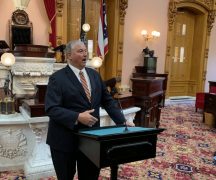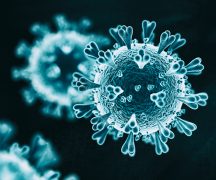Should Bowling Green Schools return to in-person classes on March 1st? The governor recently made that a condition for school personnel to get a vaccine. Although the wording is still unclear about whether March 1st is a goal or a requirement, a recent letter from Superintendent Scruci suggests that the district has already filled out a form from the governor agreeing to do just that.
There are a few items that concern me with this plan:
- Depending on the vaccine, it takes 4-6 weeks after the first dose to develop full immunity (the second dose must be given 3-4 weeks after the first and then full immunity takes 1-2 additional weeks). The governor says that school personnel (teachers, bus drivers, etc) would be vaccinated on February 1st. If they were all vaccinated that day and received the second dose on time, they likely wouldn’t have fully developed immunity until after March 1st, depending on the vaccine. I imagine it will take at least a few days to vaccinate everyone, if not longer, so it is unlikely that all will receive their first dose on February 1st. So the March 1st deadline for in-person classes seems problematic. Mid-March would be more reasonable.
- School personnel who are vaccinated and reach full immunity will be very unlikely to suffer the symptoms of COVID if exposed. But, although there are some hopeful indications, we don’t yet know for sure that vaccinated people can’t still spread COVID to others. And any school personnel who decide not to vaccinate could still spread COVID to others, including students. According to recent research in the peer-reviewed scientific journal, The Lancet, (for a summary with context see: https://www.thelancet.com/journals/laninf/article/PIIS1473-3099(20)30927-0/fulltext) one of the key ways that COVID gets transmitted in schools is between adult staff and from adult staff to students. Thus, those school personnel who are not vaccinated will pose a risk of infection to our students, who will not yet be vaccinated.
- Although adult staff are among the strongest sources of transmission in schools, the same study cited above also demonstrates that students can transmit the virus to each other, even with multiple strategies to reduce transmission, and when community spread is relatively low. This is particularly true for students older than ~12, while less true for younger students. There are probably many periods of time when transmission could occur in schools; for example, students must remove their masks during lunch. I realize that the results of this large peer-reviewed study contradict the results of the preliminary report on a small state pilot study that was conducted on quarantine restrictions, mentioned by the governor (https://coronavirus.ohio.gov/static/responsible/schools/OSCE_evaluation.pdf). I have looked closely at this report, and as a biologist and scientist (albeit not in infectious diseases specifically), this small study seems insufficient to make a conclusion that transmission will not occur in schools. The problems with this small study are many. I prefer to use more extensive, peer-reviewed research on the topic. If one examines the broader scientific literature (including the study cited above), the current evidence makes it clear that students can transmit the virus in schools, especially older children, even with precautions in place. In addition to getting sick themselves, these children can then potentially take the virus home to parents and grandparents and perpetuate the spread in the broader community.
- The levels of community spread in our area are currently very high, ~7x higher than what is considered high by the CDC. The study mentioned above found that transmission events within schools increased in locations with higher community spread. Masks and distancing are effective tools at reducingtransmission, but do not eliminate it. When community spread is higher, there are likely to be more infected people coming into the school and this increases the chance of transmission, even with control measures in place. Additionally, the new strain of SARS-CoV-2 is likely ~50% more transmissible than the earlier strain and this may further increase the likelihood of spread in schools if strict precautions are not taken (https://www.cdc.gov/mmwr/volumes/70/wr/mm7003e2.htm).
The matrix developed by the school board was based on the best available guidance from the CDC and considers the importance of levels of community spread and differences between younger and older students. Until vaccines are more widely available, community spread should play a major role in deciding when to resume in person classes, for each age level. I urge the school board and superintendent to continue to use the matrix that they developed in deciding when to resume classes in person.
Kevin McCluney
Bowling Green




